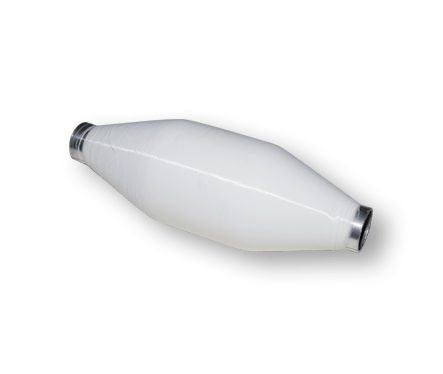Differential polyester filament fibers mainly include m […]
Differential polyester filament fibers mainly include morphology (fine denier, profiled cross-section, etc.), high performance (high strength, high modulus, low shrinkage, etc.), high functionality (high sensitivity, moisture absorption, moisture permeability, water resistance, antistatic and electrical conductivity) , Ion exchange and antibacterial properties, etc.) Several major modification directions. The following varieties are currently widely used in the market:
1. Fine denier
Fine denier is the main differentiated variety of polyester filament, and product fine denier (including monofilament size and total size) has become a trend in the production of polyester filament. The main specifications are 24D/28F, 50D/72F, 50D/144F, 75D/72F, 75D/144F, 75D/288F, 150D/576F, etc. Among them, the 576F product is drawn by two spinnerets, which are combined during winding.
The fine-denier yarn market has a large capacity, and the large-capacity direct spinning production line has the characteristics of stable product quality, low energy consumption and cost, and long batch number. It has great advantages in the development of fine-denier products. At present, the selling price of fine-denier polyester filament is about 14,000 yuan/ton, and the profit is about 1,000-2500 yuan/ton higher than conventional varieties. It is mainly used for high-end fabrics and decorative fabrics. The products of some enterprises have been widely recognized by the market, replacing imports.
2. Shaped section
At present, the hot spot of polyester filament special-shaped cross-section fiber is moisture-wicking fiber. It forms grooves on the surface of the fiber, and the cross-section is cross-shaped or five-leaf. , Jackets, sportswear, underwear, etc. are widely used.
Hollow fibers are also widely used special-shaped cross-section fibers, such as warm fibers produced by Haitian, Xianglu, and Yuanfang, which are used for knitted polar fleece and other fabrics.
Water-proof and moisture-permeable fibers are also used in sports and outdoor products through fiber surface treatment to achieve the functions of waterproofing and rapid evaporation of water vapor. At present, some chemical fiber companies in Japan have products.
3. Hetero-gloss fibers such as full matte and bright light
The modification method of these fibers is to add some additives to polyester, which are basically produced by chip spinning enterprises. At present, direct spinning enterprises have also begun to develop these products. Due to the limited market capacity of these products, the direct spinning output is relatively high, and there are big problems in product sales.
4. Sea-island silk and compound spinning
Sea-island fiber is an ultra-fine or ultra-fine fiber made by compound spinning technology. The monofilament has a linear density of 0.05 dtex. The fabric is soft and smooth. It is widely used in apparel, home textiles and high-grade wipes.
The composite spinning is mainly composed of polyester and nylon, with orange petals, rice-shaped and other special-shaped cross-sections, with good moisture absorption, and is mainly used in cleaning products and home textile products.
In addition, the low melting point, flame retardant, antistatic, and conductive functions of many fibers are also achieved through the special structure of composite spinning.
5. Flame retardant, antibacterial, mildew, antistatic, anti-ultraviolet, far-infrared fiber, etc.
These high-functional fibers are also modified by adding certain components. At present, the output is small, the price of these products is higher, and the market added value is high.
